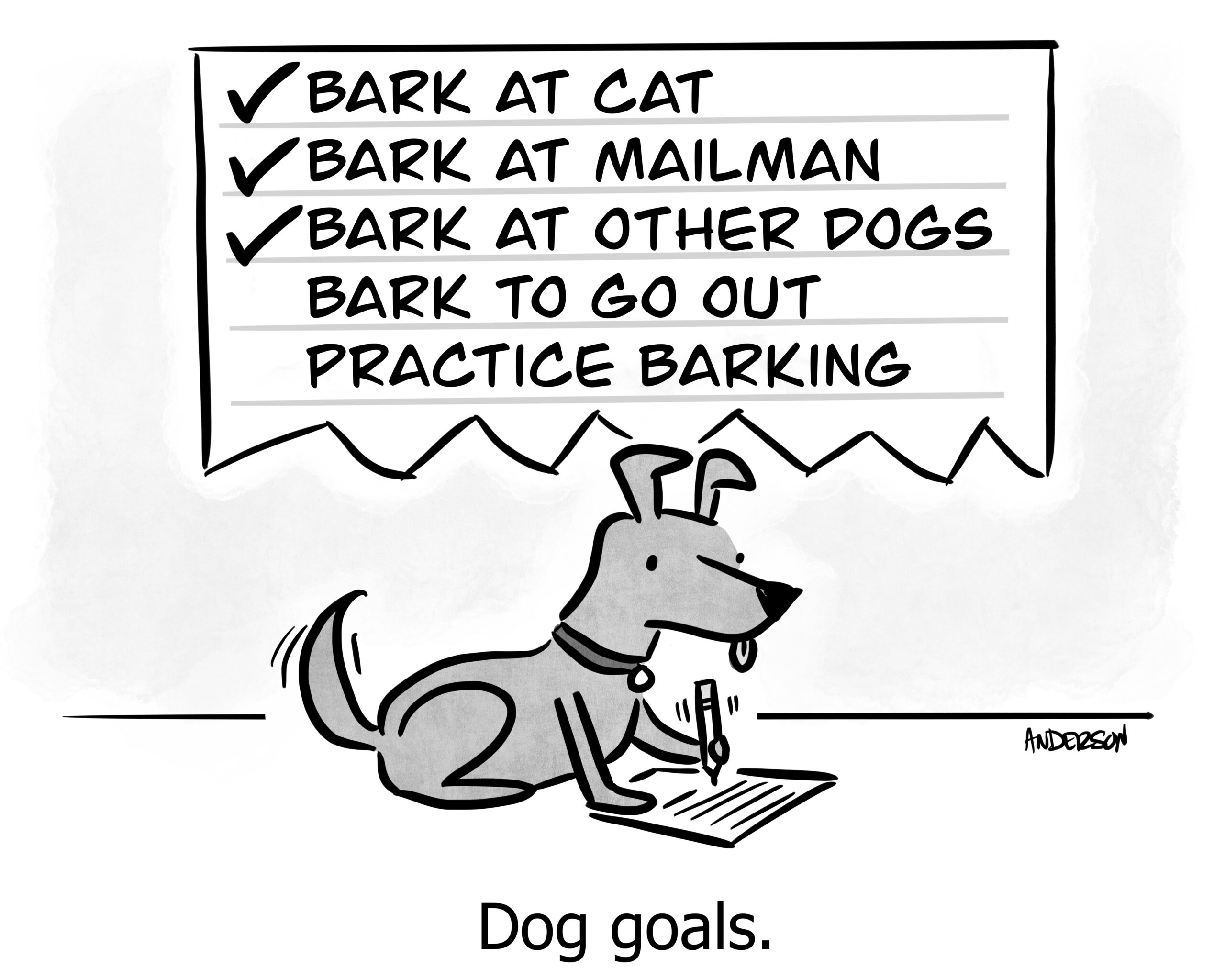How authors can work with a cartoonist

I’m currently editing a book that will include cartoons. Cartoons will make the book much more enjoyable, even as they drive home the points in the chapters. And I’ve never had this much fun working. Today: what it’s like to work with a cartoonist.
This isn’t my first book with cartoons. For Marketing to the Entitled Consumer, the book I ghost wrote with Dave Frankland and Nick Worth in 2018, we licensed cartoons from the estimable Tom Fishburne, also known as Marketoonist. Since Tom’s existing (and devastating) cartoons were already on the topic of marketing, it was a simple question of choosing and licensing one cartoon per chapter.
The book I’m editing now is different. It’s a no-nonsense management book based on principles backed up by brain science, with 38 short chapters. Since existing cartoons didn’t match up to the chapters, we decided to find a cartoonist and commission some.
The cartoon process
I’ve been working with Mark Anderson of Andertoons. Here’s how it works:
- Mark reads chapters.
- Both of us come up with gags and put them in a shared Google Document.
- We get on a Zoom call and collaborate. Sometimes my ideas are workable, more often his are. Sometimes neither is quite there, but by riffing on the ideas, we get to a better concept.
- He makes sketches of the ideas.
- If they work, he shades them and makes finished cartoons. If they don’t, we keep working the concept or replace it.
For example, one chapter was about setting goals. Mark executed two concepts, one of which was the Dog Goals cartoon at the top of this post. (We used the other idea in the book, which is why I can share this one with you.) Here’s an animation of how Mark creates and shades the cartoon.
A good cartoonist can work fast
The thing that amazed me most is the speed with which we can do gags. We can conceive and vet a dozen in an hour. Either an idea is funny, or you tweak it to be funnier, or you dump it and come up with another one. My contribution as the client is a deeper knowledge of business concepts and an oddball sense of humor. But Mark brings something much rarer. He knows the tropes (the psychiatrist’s couch, the meeting in the conference room, the sales chart, and, for some reason, dogs) and he also has a unique way of taking a concept and turning it in an utterly unexpected direction.
I think a normal person sees the world according to certain conventions. My own approach to humor is to find places where those conventions are absurd or could be violated, and go to those places. But Mark is utterly unconstrained by the conventions at all — his instinct is to question things that nobody ever questions.
There are constraints, of course. The cartoons don’t lampoon the concepts in the book, since that would undermine its credibility. They’re G-rated, since there’s no reason to offend anyone. And each joke needs to drive home some element of the truth of the chapter it’s included in. But that’s about it. If we can conceive it and Mark can draw it, it’s on the page.
We’ll complete this cartoon project in about three weeks, at a reasonable price — given the number of cartoons required, that’s amazing.
I’m utterly convinced that every business book ought to consider a licensing agreement like this. Working with a cartoonist will make you see your own content in a new light. It will liven up the text. And it’s the most fun you can have and call it “work” as you create a business book.
“… backed by brian science…”
Brian Science is a neat name for a kids science communicator — you know, like Professor Proton 😉
Eeek! How embarrassing. Thanks for a chuckle.
Thanks for sharing the video of cartoon process. That was pretty cool. We recently added a designer to our marketing agency (versus outsourcing to a talented team of freelancers.) It’s been so nice to have those skills in-house and have access to someone who thinks about how things look!
The cartoon video was fascinating! And I adore reading business books that incorporate humor; I appreciate your insights about including cartoons. My Inner Grammarian ™ — who has grown wildly since starting German language lessons — thinks you dropped a word at the end of the sentence: “… will make you see your own content in a new. “